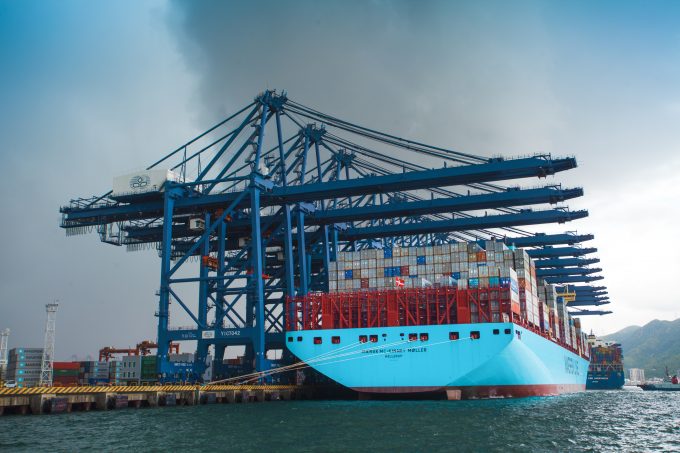Trump tariff threat and China downturn will make CNY 2025 'different'
The impact of Chinese New Year (CNY) on global supply chains “cannot be overstated”, according ...
GM: RAISING THE ROOF GGM: IN FULL THROTTLE GZIM: MAERSK BOOST KNIN: READ-ACROSSMAERSK: NOT ENOUGHMAERSK: GUIDANCE UPGRADEZIM: ROLLERCOASTERCAT: HEAVY DUTYMAERSK: CATCHING UP PG: DESTOCKING PATTERNSPG: HEALTH CHECKWTC: THE FALLGXO: DEFENSIVE FWRD: RALLYING ON TAKEOVER TALKODFL: STEADY YIELDVW: NEW MODEL NEEDEDWTC: TAKING PROFIT
GM: RAISING THE ROOF GGM: IN FULL THROTTLE GZIM: MAERSK BOOST KNIN: READ-ACROSSMAERSK: NOT ENOUGHMAERSK: GUIDANCE UPGRADEZIM: ROLLERCOASTERCAT: HEAVY DUTYMAERSK: CATCHING UP PG: DESTOCKING PATTERNSPG: HEALTH CHECKWTC: THE FALLGXO: DEFENSIVE FWRD: RALLYING ON TAKEOVER TALKODFL: STEADY YIELDVW: NEW MODEL NEEDEDWTC: TAKING PROFIT

When Maersk Group publishes its 2017 full-year results tomorrow its transport & logistics (T&L) sector will come under close scrutiny.
The Danish group’s refocusing of its core activities away from transport and energy to a container line, terminal operator and logistics provider is now well under way, as the disposal of its energy business nears completion.
Maersk’s latest 2017 full-year guidance is for an improvement of around $1bn in underlying profit for Maersk Line, which recorded a loss of $384m in 2016.
At the end of the third quarter, the container line was carrying forward a cumulative profit of $458m, achieved despite the summer Petya cyber attack which, it said, took $250-$300m off its bottom line in contingency costs and lost bookings.
As a result, Maersk Line will need a $158m fourth-quarter profit – which would seem to be within reach – to meet its full-year guidance.
So far, fourth-quarter operational numbers from OOCL, as well as fiscal year third-quarter results from K Line, MOL and NYK, do nothing to suggest that Maersk’s guidance for its container line would not be achieved.
In fact, one analyst told The Loadstar today he expected the full-year result for the carrier to be “somewhat north of guidance”. His only caveats were the impact of the spot rate erosion in the final quarter and the extra cost of fuel as oil prices climbed.
Nevertheless, he noted that Maersk had been carrying an increased percentage of contract cargo and was seen as a ‘safe haven’ by shippers, which should have had a positive influence on its revenue. And, going forward, analysts are positive.
“The outlook for 2018, given the simplification of the group, will increasingly centre on the fortunes of the container shipping business,” said Mark McVicar at Barclays Equity Research.
“Market conditions should be reasonably balanced, with demand growth in the 3-5% range, net supply growth in a similar range and the Hamburg Süd acquisition expected to yield synergy benefits of $350-$400m by 2019, with some becoming visible in the latter part of 2018.
“We expect useful growth in underlying profits from the guided base of some $1bn net underlying profits in 2017.”
Meanwhile, the picture does not appear so rosy for the line’s sister businesses: terminal operations and logistics.
APM Terminals’ impairment-impacted third-quarter loss of $267m was partly due to what it described as “challenging market conditions”. The alliance restructuring resulted in a loss of two contracts last year, but APMT did pick up some new business.
However, liner consolidation has added more downward pressure on stevedoring rates, as new entities such as Ocean Network Express not only demand the lowest partner rate but also a further discount for volume.
Lastly, Maersk’s forwarding arm, Damco, is unlikely to have improved on its nine-month cumulative loss of $14m, having been squeezed on its ocean freight margins for much of the year.
Comment on this article